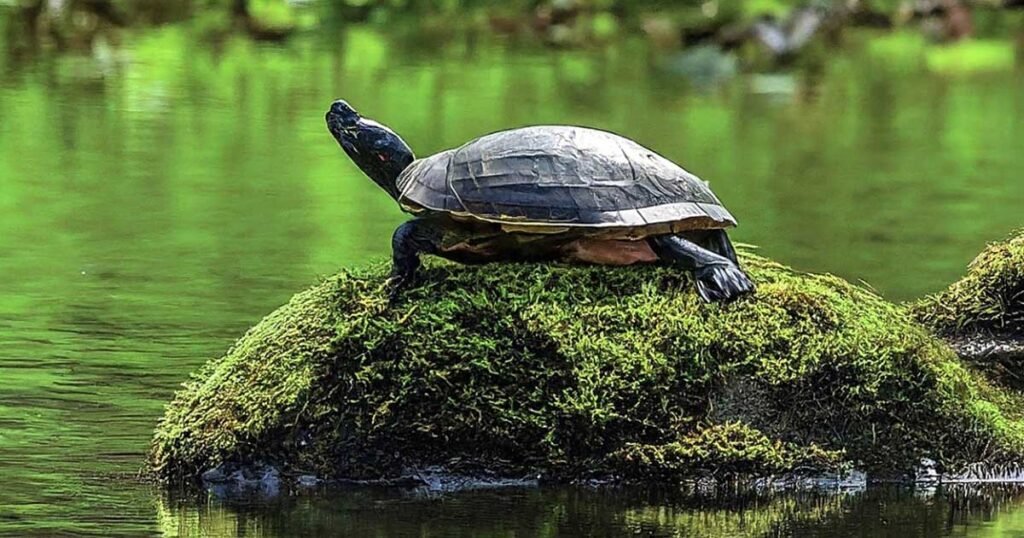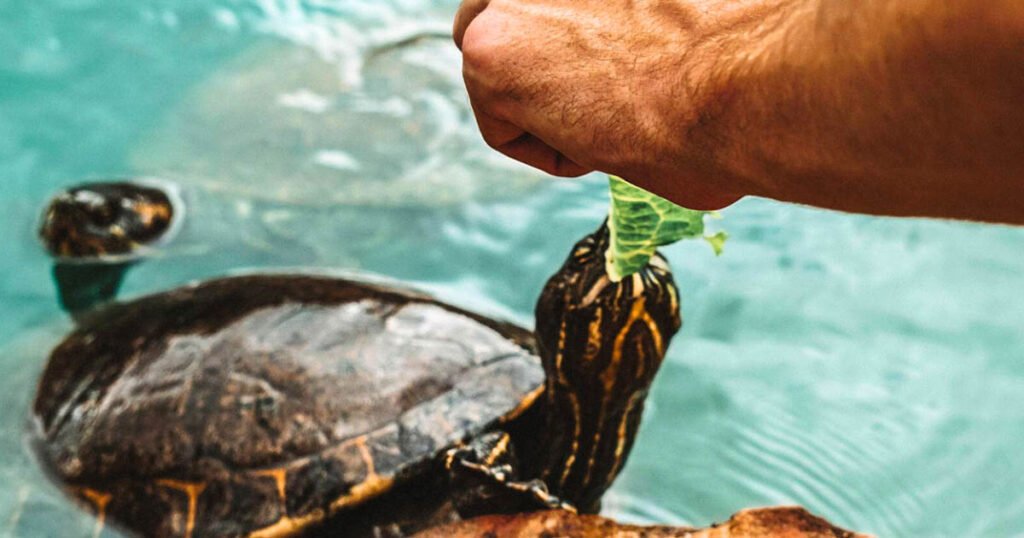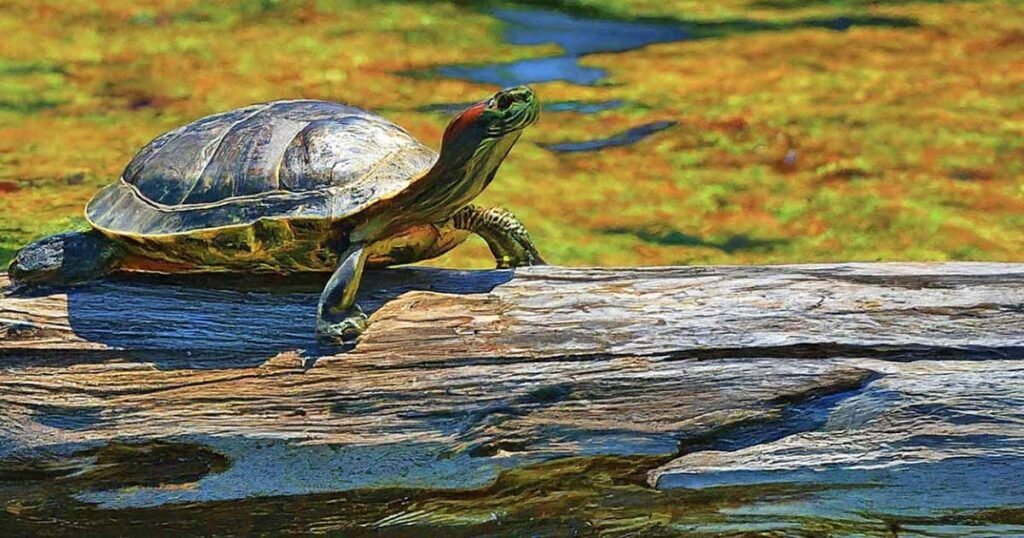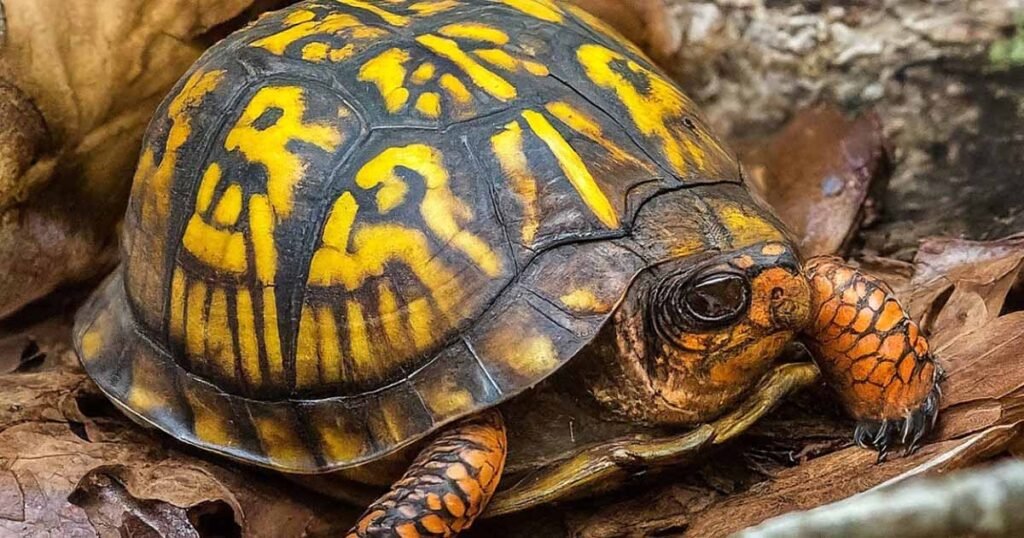Have you ever spotted a turtle basking in the sun or gliding through a pond in the wild? These fascinating creatures are amazing to watch, and you might wonder if you can give them a tasty treat. But what to feed wild turtles? Wild turtles have specific dietary needs that depend on their species and environment.
In this article, we’ll answer the common question of what to feed wild turtles. Also, we’ll talk about what food is safe and healthy for wild turtles, what to avoid, and some safety tips.
What to Feed Wild Turtles?

Wild turtles hang out in places like ponds, lakes, and even forests near streams. Before you share food, let’s learn what wild turtles actually eat to keep them happy and healthy.
Know the Turtle, Know Your Food
Before offering a bite, try to identify the turtle you find. Different species have different dietary needs. For example, younger turtles tend to require more protein in their diet compared to adults. Because baby turtles lean towards a more plant-based menu, you can identify the visitor by searching the internet for turtle species in your area.
Observe from Afar
It’s best to feed wild turtles from a distance and avoid touching them. Wild turtles can carry harmful bacteria like salmonella to humans, so keep a safe distance when offering a snack.
A Wild Turtle’s Food
Wild turtles are primarily omnivores, meaning they eat both plants and animals. If you have a pet turtle, wild turtles’ diet habits mostly match them. Here are some healthy options you can offer them:
- Insect buffet: Earthworms, mealworms, crickets, and grasshoppers are all delicious protein sources for turtles. They’re like little turtle tacos.
- Veggie Patch: Chopped carrots, squash, peas, and leafy greens like collard, turnip, and dandelion leaves provide essential vitamins and minerals. A colorful salad can feed the wild.
- Fruit Salad (chopped): Apples, pears, melons, and berries can be sweet treats for turtles. If possible, cut them into bite-sized pieces to avoid choking hazards. However, for wild turtles, you can serve whole fruits; they may eat them in bite-size.
- Species-Specific Pellets: Some pet store suppliers have specialized pellets for turtles that cater to their nutritional needs.
What’s to Avoid From Wild Turtles Menu?
While you might be tempted to share your lunch, there are some foods not suitable for turtles:
- Processed Foods: Bread, chips, and other processed foods lack essential nutrients wild turtles need and can cause digestive problems.
- Dairy Delights: Milk, cheese, and yogurt are not part of a turtle’s natural diet and can upset their stomachs.
- Veggie Villains: Certain vegetables, such as spinach, chard, beetroot, and rhubarb, contain high levels of oxalic acid, which can be harmful to wild turtles.
- Risky Raw Meat: Avoid giving turtles raw or seasoned meat. It can harbor bacteria and parasites that can make them sick.
- Fireflies: Fireflies, also known as lightning bugs, may be toxic for turtles.
- Sneaky Plant Parts: The leaves of some fruits and vegetables, like potatoes, tomatoes, tobacco leaves, and rhubarb, can poison turtles.
Respecting wild turtles’ habitat is the best way to support them. Please stay away from their nesting areas and keep waterways clean. These shelled wonders should find their food naturally.
Is it Okay to Feed Wild Turtles?

We already answered that, yes, you can feed wild turtles, but is it safe for them? While offering a treat might seem like a kind gesture, there’s more to consider when feeding wild turtles.
With some research, you can find the right food for a specific turtle species and age. But there’s a catch. The wrong food can actually make them sick, causing shell deformities or bone issues.
Here’s the thing: wild turtles find their food. They’ve been surviving and thriving in their natural habitat for a long time. While it might seem like you’re helping a hungry turtle, it could already be old, sick, or injured. It might not be the best solution to offer a snack in that case.
So, the answer to feeding wild turtles isn’t yes or no. It’s best to admire these fascinating creatures from afar and let them find their food in their natural environment. If you really want to feed them, you should offer them the right food that is digestible for them.
Feeding Tips for Wild Turtles

Remember, these are wild animals, so keeping a safe distance when offering a snack is critical, as mentioned earlier. Here are some tips for responsible feeding:
Stay Away: Wild turtles can carry bacteria, so avoid touching them altogether. Leave the food on the ground (land turtles) or in shallow water (water turtles) for them to discover. It is essential for snapping turtles, whose bites can pack a punch!
Bite-Sized Treats: Cut up any food you offer into small, manageable pieces that the turtle can quickly eat. Tiny mouths need bite-sized snacks. Remove any tough skin, peels, or stalks that might be difficult to swallow. If you can’t manage cutting or peeling, serve whole fruit like apples. They will take a mini bite of how much they are capable of.
Variety is Key: Most people do not see a wild turtle regularly. But if you live in an area with wild turtles as neighbors and feed them frequently, you should maintain variety. Avoid giving them too much of the same thing. Offer a mix of different foods or alternate them on other days.
Wash Your Hands: Before placing any food down, wash your hands thoroughly to avoid transferring bacteria to the turtles.
No Sharing Zone: This might seem obvious, but don’t share your food with the turtles, and don’t eat any leftovers they might leave behind. It’s advisable to keep human food separate from their natural diet.
Different Wild Turtles Dietary Needs

When we talk about wild turtles, they are primarily omnivores, and their dietary needs are pretty close. But baby and adult turtles’ diet requirements are different because baby turtles in most of the species are mainly carnivores. Let’s look at some of the the turtle types diet preferences:
Feeding Baby Wild Turtles
Just like human babies need lots of milk to grow strong, baby turtles have different food needs than grown-up turtles. These little shell-dwellers are busy growing fast, so they need a special diet packed with protein to keep them fueled up. That means they eat more insects and other animal matter than adult turtles.
The exact food for your tiny turtle friend depends on the species, but most baby turtles will enjoy a tasty snack of:
- Tiny Insects: Small earthworms, mealworms, crickets, and grasshoppers are all delicious protein sources for these growing turtles. Think of them as tiny turtle tacos!
- Veggie Nibbles (in a pinch): If finding insects is tricky, you can offer a small amount of chopped vegetables. Carrots, squash, romaine lettuce, and collard greens are all safe options.
- Fruity Treats (chopped): Baby turtles might also enjoy a taste of melon, berries, apples, or bananas. Just remember to cut them up into bite-sized pieces to avoid choking hazards.
No matter what you offer, remove any harsh peels or stalks and cut everything into bite-sized pieces. After all, baby turtles have tiny mouths and can’t handle big chunks of food.
Feeding Wild Box Turtle
Wild box turtles are also familiar as box tortoises. Box turtles are fascinating land turtles with their look, and this species is native to North America. Unlike most turtle species that prefer watery habitats, these guys like to keep their feet on the ground.
If you encounter a box turtle and want to offer a snack, here are some safe and delicious options:
- Insect/ Meat: Like many other creatures, box turtles enjoy a good insect meal. Earthworms, mealworms, crickets, and grasshoppers are all tasty protein sources that will keep them happy.
- Veggie Garden: Chopped vegetables like carrots, green beans, sweet potatoes, okra, and leafy greens (turnip, dandelion, collard, and mustard) provide essential vitamins and minerals for these shelled friends.
- Fruity Delights: Box turtles might also enjoy chopped fruits like apples, plums, pears, mangoes, peaches, bananas, melons, or berries (blackberries and mulberries).
Feeding Wild Aquatic Turtles
Water turtle’s dietary needs are based on their aquatic lifestyle. However, the diet is almost similar to other turtle species. These fascinating creatures are also omnivores, meaning they enjoy both plants and animals. Painted turtles, red-eared sliders, and snapping turtles are the most familiar aquatic turtles. Here are some tips for feeding wild water turtles responsibly:
- Serve in Water: Water turtles spend most of their time swimming, so offer any food in the water. They’re usually used to finding food there and might not approach food left on land.
- Veggie Patch: Vegetables like carrots, squash, peas, and leafy greens (think romaine lettuce, collard greens, kale, watercress, dandelion, and mustard) provide essential vitamins and minerals.
- Fruity Treats: Water turtles might also enjoy a bite of chopped fruits like apples, pears, bananas, papaya, guava, grapes, melons, and berries (strawberries, blueberries, blackberries, and raspberries).
- Aquatic Buffet: Some water turtles munch on aquatic plants like duckweed, water lettuce, and water lily leaves. Just imagine a floating salad bar.
- Bugs: Insects are water turtles’ favorite protein source. Consider offering dragonfly and beetle larvae, crickets, grasshoppers, mealworms, cockroaches, or water snails.
- Tiny Treats: While small animals like tadpoles, rosy red minnows, and common guppies might be tempting, they can be challenging to find and raise. Some pond supply stores may offer these as food but use them sparingly.
- Pellet Power: Once you’ve identified the specific water turtle species, you might find specialized pellets in pet stores or animal food suppliers. These pellets are formulated with the right balance of nutrients and protein for different turtle species.
The best way to support wild water turtles is to respect their natural habitat and let them find most of their food independently.
Feeding Sea Turtle
Sea turtles are incredible creatures that roam the vast oceans. It is doubtful that you will commonly face sea turtles to feed them in your surroundings. However, feeding these amazing animals is trickier unlike their land and freshwater cousins. Here’s why:
- Specialized Eaters: Sea turtles have particular dietary needs that depend on their species. Some are herbivores, meaning they eat primarily plants, while others are omnivores or carnivores, enjoying a mix of plants and animals.
- Ocean Menus: Turtles’ diets are also specific to their ocean environment. For example, leatherback turtles love jellyfish, while green turtles munch on seagrass.
Because of these specialized diets and their vast ocean homes, it’s not recommended to feed a sea turtle you encounter in the wild. Also, you will only get the chance sometime soon if sea turtles are reserved in any water park or zoo. Food might not be what they need, and it could even harm them.
If you see a sea turtle that appears injured or in distress, the best thing to do is contact a nearby wildlife rescue organization or hotline. These experts can provide the proper care and assistance the turtle needs.
Remember, the best way to support sea turtles is to leave their ocean habitat and avoid disturbing them.
Read More: Do Turtles Eat Snails?
FAQs
What to feed turtles in the wild?
You can feed foods like insects, veggies, or even some fruits to wild turtles. It’s actually best to observe them from afar. Their natural habitat provides the food they need. If you’re curious about a specific turtle’s diet, do a quick web search to learn more about what they eat in the wild.
What to feed a wild box turtle?
Wild box turtles find all the food they need in their natural habitat. However, you can provide insects, worms, and even fruits and veggies if you want. It’s best to admire them from afar and let them enjoy their natural diet.
Wrapping Up
So there you have it! A crash course on what to feed (or not to feed) different types of turtles. Remember, these fascinating creatures are wild and have adapted to finding their food in their natural environments. Our snacks might seem tempting, but they are unhealthy for turtles. To help these shelled wonders, you should admire them from a safe distance and avoid disturbing their habitat.
